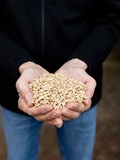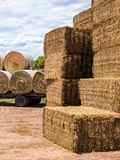Central SA
20 May 2020
| Date | C SA 23 | C SA 22 | C SA 5YA |
|---|---|---|---|
| 06-Jan-23 | 328 | 200 | 235 |
| 13-Jan-23 | 333 | 200 | 237 |
| 20-Jan-23 | 338 | 210 | 243 |
| 27-Jan-23 | 348 | 210 | 240 |
| 03-Feb-23 | 353 | 210 | 239 |
| 10-Feb-23 | 358 | 210 | 241 |
| 17-Feb-23 | 361 | 210 | 244 |
| 24-Feb-23 | 363 | 210 | 246 |
| 03-Mar-23 | 368 | 210 | 241 |
| 10-Mar-23 | 368 | 210 | 236 |
| 17-Mar-23 | 366 | 215 | 237 |
| 24-Mar-23 | 363 | 215 | 237 |
| 31-Mar-23 | 363 | 210 | 236 |
| 07-Apr-23 | 363 | 210 | 238 |
| 14-Apr-23 | 364 | 210 | 245 |
| 21-Apr-23 | 365 | 210 | 245 |
| 28-Apr-23 | 365 | 210 | 230 |
| 05-May-23 | 365 | 210 | 231 |
| 12-May-23 | 363 | 210 | 232 |
| 19-May-23 | 360 | 210 | 232 |
| 26-May-23 | 358 | 205 | 232 |
| 02-Jun-23 | 358 | 210 | 233 |
| 09-Jun-23 | 348 | 210 | 238 |
| 16-Jun-23 | 347 | 210 | 244 |
| 23-Jun-23 | 345 | 210 | 245 |
| 30-Jun-23 | 340 | 210 | 245 |
| 07-Jul-23 | 335 | 210 | 245 |
| 14-Jul-23 | 333 | 218 | 261 |
| 21-Jul-23 | 330 | 225 | 262 |
| 28-Jul-23 | 330 | 225 | 266 |
| 04-Aug-23 | 320 | 225 | 274 |
| 11-Aug-23 | 320 | 225 | 279 |
| 18-Aug-23 | 318 | 225 | 295 |
| 25-Aug-23 | 315 | 225 | 295 |
| 01-Sep-23 | 315 | 228 | 302 |
| 08-Sep-23 | 228 | 312 | |
| 15-Sep-23 | 228 | 303 | |
| 22-Sep-23 | 228 | 291 | |
| 29-Sep-23 | 228 | 263 | |
| 06-Oct-23 | 228 | 246 | |
| 13-Oct-23 | 228 | 241 | |
| 20-Oct-23 | 228 | 242 | |
| 27-Oct-23 | 228 | 244 | |
| 03-Nov-23 | 228 | 244 | |
| 10-Nov-23 | 228 | 246 | |
| 17-Nov-23 | 250 | 246 | |
| 24-Nov-23 | 290 | 254 | |
| 01-Dec-23 | 295 | 259 | |
| 08-Dec-23 | 300 | 262 | |
| 15-Dec-23 | 305 | 260 | |
| 22-Dec-23 | 315 | 266 | |
| 29-Dec-23 | 324 | 272 |
Notes:
Change in price is the change since the last report. Hay quoted is sourced and delivered locally, GST exclusive unless stated otherwise. It should be noted that local prices quoted may not be the cheapest available, sourcing it from another region may be more affordable, and buyers are encouraged to evaluate all options. Prices are indicative to a mid-range shedded product, and based on the best indication of market value at the time of reporting. It should be noted there is a wide variation in quality of hay, prices for a mid-range product will not reflect the weighted average of trade. Prices will naturally vary based on the product quantity and quality, buyer/seller relationship and the size of the trade.The hay report has been commissioned by Dairy Australia to provide an independent and timely assessment of hay markets in each dairy region. This report is created using data provided by the Australian Fodder Industry Association (AFIA). It should be remembered that actual prices may vary for quality or other reasons. Whilst all reasonable steps have been taken to ensure the accuracy of the information contained in this report, Dairy Australia disclaims all liability to the fullest extent permitted by Australian law for any inadvertent errors and for any losses or damages stemming from reliance upon its content. Dairy Australia recommends all persons seek independent advice and, where appropriate, advice from a qualified advisor before making any decisions about changes to business strategy.
Commentary
- Early January rain provided initial subsoil moisture and many growers are now waiting for the autumn break. Some areas within the region, such as Yorke Penninsula, have received two to three falls of between 12-14 mm of rain since January. Others have not received regular rainfall.
- Summer weeds continue to require management, gypsum/lime is being spread in preparation for sowing which will commence in mid to late April.
- Straw is currently being spread on salty areas and sand hill country. Straw supplies are low.
- Early March has remained a slow time for domestic hay trade. Enquiries are increasing and there is increased straw and hay movement for equine customers and sheep farmers across the Mallee region. Further fodder movement is expected over the next two months as paddock feed dries.
- Slight increases for high quality cereal hay this week.
- Cereal hay: +$5 ($190 to $240/t). Prices have increased.
- Lucerne hay: +/-0 ($390 to $420/t). Prices remain steady this week.
- Straw: +$5 ($90 to $150/t). Prices have increased.
- Please note: Unless stated otherwise, prices are per tonne, sourced and delivered locally. The price range indicated is for feeds of varying quality with the price range generally indicative of quality of feed. We recommend feed testing and viewing of fodder before purchase to be sure of the quality of feed.

